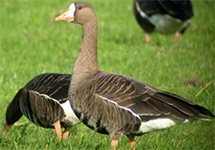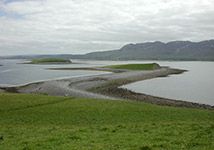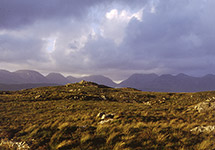Ireland is home to 28 species of land mammal, over 400 species of birds, more than 4,000 plant species and over 12,000 species of insect. If we want all of this to survive, we must ensure that there are enough suitable areas for all these species to flourish.
Find a Protected Site
Conserving species in their natural habitats requires a strategic approach to succeed. One of these is to ensure the adequate conservation of habitats where many of our plants and animals live. Rare and fragile species such as the corncrake and the blue cornflower were found all over the country 50 years ago but now have almost disappeared, the demise of these species is linked to change in agricultural practices. To succeed, in conserving our native species we need the support of landowners and people who use or visit the land.
Ireland aims to conserve habitats and species, through designation of conservation areas. This is required of us under European and national legislation. The National Parks & Wildlife Service (NPWS) is responsible for the designation of conservation sites in Ireland. The NPWS works with farmers, other landowners and users, and national and local authorities, trying to achieve the best balance possible between farming and land-use on the one hand, and requirements for conserving nature in these selected areas, on the other.
NPWS is changing the way we share information about protected sites. The site specific information on the NPWS website for Natura 2000 sites i.e. SAC and SPA sites, is currently under review.
If you require up-to-date information about a Natura 2000 site, please link to the Statutory Instrument on our website, or email us at natureconservation@npws.gov.ie.
Data included in the Standard Data Forms (SDFs) for each Natura 2000 site can be accessed on the European Commission website.
![]() For bulk summary data on Natura2000 sites visit the Designated Site Data Page for SACs and SPAs.
For bulk summary data on Natura2000 sites visit the Designated Site Data Page for SACs and SPAs.
View and download Protected Sites spatial data through the NPWS Protected Sites map-viewer.



